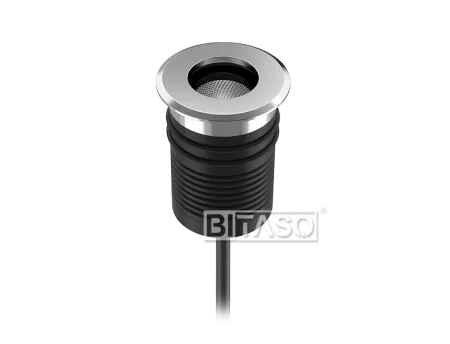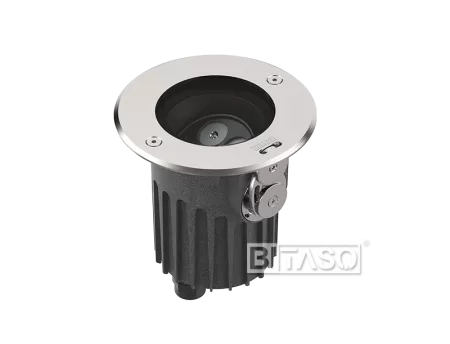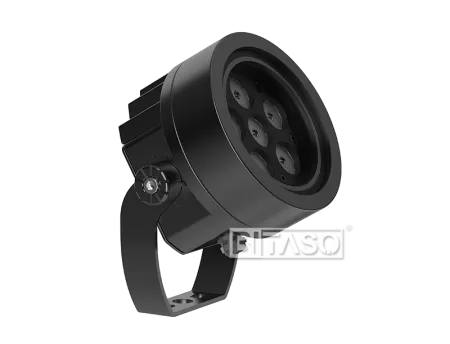Jan. 04, 2024
Floodlights are potent artificial lighting fixtures designed to emit intense and expansive illumination across a vast area. Primarily utilized outdoors, they effectively light up spaces like stadiums, parking lots, and building exteriors. Additionally, these lights find application indoors within warehouses, workshops, or expansive halls.
The primary goal of floodlights is to furnish high-intensity illumination covering a wide expanse, thereby improving visibility and safety. They serve multiple purposes, including deterring criminal activity, facilitating tasks that necessitate clear visibility, and crafting aesthetic or dramatic effects. Floodlights serve varied functions, whether as general lighting, security lighting, or to accentuate specific features or areas of interest.
As a premier flood light supplier, we recognize the pivotal role these lights play in various settings, from residential landscapes to commercial arenas.
The word "flood" has nothing to do with water. A flood light is called "flood" because it is designed to provide a broad and powerful beam of light that can cover a large area, much like a flood of water.
The term "flood" distinguishes the expansive coverage of light emitted by floodlights, contrasting with spotlights that generate a concentrated and narrow beam. Typically employed in outdoor settings like parking lots, sports fields, and construction sites, floodlights are ideal for providing extensive visibility and safety across a wide area. Furthermore, the term "flood" connotes the ability of these fixtures to simulate the natural brightness of daylight, crafting a welcoming and well-lit environment reminiscent of a sunny day.
Here is a list of where flood lights are commonly used:
Outdoor sports fields
Parking lots
Construction sites
Outdoor events
Stage lighting
Indoor commercial and industrial spaces
Security lighting
Billboards and advertising
Landscaping and garden lighting
Boating and marine lighting
Emergency lighting
Airport runways and aircraft hangars
Movie and TV production sets
Photography lighting
Mining and excavation sites
Military applications
Fire and rescue operations
Search and rescue operations
Agriculture and farming operations
Roadway and highway lighting
Bridges and tunnels
Large residential properties
Museums and galleries
Aquariums and zoos
Theme parks and amusement parks
Floodlights stand out as a distinct lighting category with several key disparities from other lighting types. Below are notable differences:
Beam Angle: Floodlights offer a wide beam angle, typically ranging from 90 to 120 degrees, ensuring expansive and uniform illumination over extensive areas. Conversely, spotlights possess a narrower beam angle, usually between 10 to 30 degrees, targeting specific objects or areas for highlighting.
Intensity: Floodlights are engineered to emit high-intensity light across broad areas, making them suitable for applications like outdoor sports or security lighting. In contrast, ambient lights serve for general illumination and generally lack the intense brightness of floodlights.
Directionality: Floodlights typically have a directional focus, emphasizing illumination in a specific area or direction. Conversely, diffused lights like fluorescent or incandescent bulbs disperse light in multiple directions, offering a more widespread illumination.
Energy Efficiency: LED floodlights exhibit high energy efficiency, consuming up to 80% less energy than conventional incandescent lights. This eco-friendly attribute positions them as an optimal choice for outdoor lighting needs.
Lifespan: LED floodlights boast a significantly longer lifespan compared to traditional incandescent lights, proving to be a cost-effective solution for outdoor lighting purposes.
Cost: Although LED floodlights may have a higher initial cost than traditional lights, their energy efficiency and prolonged lifespan result in cost savings over time, making them a financially prudent choice.
Selecting the right floodlight involves considering several factors, including its intended use, the area's size for illumination, and individual preferences. Here are some pointers to aid in your floodlight selection:
Purpose Determination: Define the primary purpose of the floodlight—whether it's for security, outdoor events, or indoor workshop lighting. This helps in deciding the appropriate size, brightness, and type of floodlight.
Wattage Assessment: Consider the wattage of the floodlight. Higher-wattage bulbs produce brighter light but also consume more energy, potentially escalating energy costs.
Bulb Type Selection: Choose the suitable bulb type for the intended application, such as LED or halogen bulbs. LEDs are often more energy-efficient and boast longer lifespans compared to halogens.
Color Temperature Deliberation: Factor in the color temperature of the bulb, as it influences the mood and ambiance of the illuminated area. Warmer temperatures (around 2700K) create a relaxed and inviting atmosphere, while cooler temperatures (around 5000K) establish a brighter and more alert environment.
Beam Angle Consideration: Assess the floodlight's beam angle. Wider angles offer broader illumination, whereas narrower angles provide more focused lighting.
Weather Resistance Check: If the floodlight is for outdoor use, consider its weather resistance. Opt for lights specifically rated for outdoor use, ensuring they are weather-resistant.
Motion Sensor Contemplation: Decide whether to include a motion sensor with the floodlight. Motion sensors can conserve energy and add an extra layer of security.
Installation Evaluation: Consider the installation process of the floodlight and ensure it's securely mounted and positioned as desired.
Flood lights offer several advantages, including:
Expansive and Uniform Illumination: Floodlights provide wide and consistent illumination across large areas, making them perfect for outdoor sports, security lighting, and other scenarios requiring extensive, bright light coverage.
Energy Efficiency: LED floodlights boast high energy efficiency, consuming up to 80% less energy than traditional incandescent lights. This eco-friendly attribute makes them ideal for outdoor lighting needs.
Extended Lifespan: LED floodlights significantly outlast traditional incandescent lights, proving to be a cost-effective choice for outdoor lighting applications.
Cost-Effectiveness: Although LED floodlights might have a higher initial cost, their long-term savings from energy efficiency and prolonged lifespan outweigh the initial investment.
Low Maintenance: LED floodlights require minimal maintenance compared to traditional lights, as they require less frequent replacement and are less prone to damage.
Enhanced Security: Utilized for illuminating dark areas, floodlights aid in deterring intruders, thus improving security measures.
Versatility: Floodlights are available in various styles, colors, and sizes, offering versatility for a wide range of outdoor lighting purposes.
Various installation options are available for floodlights, including:
Wall-Mounted: Commonly used, wall-mounted floodlights are affixed to the side of a building or structure. They offer ease of installation and deliver wide, uniform illumination across extensive areas.
Ground-Mounted: Positioned on stakes or posts, ground-mounted floodlights find placement in diverse locations like landscaping beds or along pathways. They effectively highlight specific features or areas, offering a more dramatic lighting effect.
Pole-Mounted: Installed atop tall poles or posts, pole-mounted floodlights deliver expansive and uniform illumination, making them suitable for outdoor sports, parking lots, and other applications requiring elevated lighting sources.
Recessed: Recessed floodlights are embedded into ceilings or walls, presenting a low-profile and concealed lighting option. Ideal for creating a sleek and contemporary appearance in both indoor and outdoor spaces.
As a leading flood light supplier, we prioritize offering premium-quality products that align with varying customer needs. Our extensive range of flood lights caters to diverse requirements, ensuring superior illumination, durability, and energy efficiency.
In conclusion, selecting the right flood lights involves considering factors such as brightness, energy efficiency, durability, and additional features like motion sensors. As a trusted supplier of high-quality flood lights, we guarantee top-notch products that elevate your lighting experience. Contact us today to explore our comprehensive range and find the perfect lighting solutions for your space.
Contact Us to discover the perfect flood lights tailored to your needs. Elevate your space with our premium lighting solutions!
Previous: Garden Beam Angle Adjustable Spike Lighting Design Ideas
Next: 10 Reasons Why Landscape Architects Love Our Lighting Products
Hot Products

DIAMOND D38 SMD
Luminaures with CREE COB or XP-E/G LEDS provide excellent light quality with highly precise light distribution,free of colour shifts and dis-tortion,special PCB layouts ensure the led moudules are optimally matched to the optical system of the luminaires.

EARTHA D135 SMD Beam Angle Adjustable Uplight
Beam Direction Adjustable In-Ground Light D135 SMD Outdoor 6W-12W DC48V

MILESTONE D120 SMD Bracket
Surface Architectural Floodlight Milestone D120 SMD Bracket 15-24W
Contact Us
E-mail: sales@bitaso-lite.com
Tel.: +86 758 2801 266
Phone: +86 186 2047 1396
Add.: No.308, Lianhai Rd., Jianghai District, Jiangmen City, GD.P.R. China